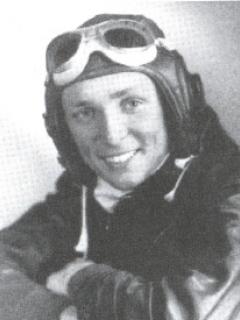DYE-JAMES
JAMES WESLEY DYE JR.

ARM3

KILLED AND CANNIBALIZED
WHILE A POW OF THE JAPANESE
James Wesley Dye Jr. was born in Mount Ephraim, New Jersey, on November 27, 1925. His early years were spent in Gloucester City, New Jersey, where his father was a bus driver and his mother worked as an inspector in a radio factory. James graduated from Audubon High School in Audubon, New Jersey, before joining the Navy in February 1943. His initial service was in the Atlantic before he was transferred to the newly commissioned carrier USS Bennington in December 1944. Aboard Bennington, Dye was assigned to Torpedo Squadron Eighty-Two where he was an Aviation Radioman Third Class aboard a three-man TBM Avenger bomber.
On February 18, 1945, ARM3 Dye departed Bennington on his first combat mission with VT-82 aboard TBM-3 Avenger BuNo 22904 to conduct a bombing mission against Chichi Jima Island. Unfortunately, the plane was severely damaged during the attack, and what followed when ARM3 Dye became a POW has become known as the Chichi Incident, a horrendous incident that was not made known to the American public until 2003. Chichi Jima Island is 620 miles south of Tokyo and part of the Bonin Island Group. During World War II the small island was critical to the Japanese communications services who used it as a strategic radio relay link. Missions here flew into the teeth of Chichi Jima’s lethal antiaircraft guns, somehow dodging the shells aimed at them, to release their bombs onto the reinforced concrete communications facilities on top of the island’s twin peaks. The gruesome Chichi Incident was in essence cannibalism as Japanese soldiers reportedly tortured, killed and ate as many as eight American airmen being held as POWs.
As ARM2 Dye’s plane dove toward its target it received such severe damage that the pilot, ENS R. T. King, ordered his two companions to bail out. According, ARM2 Dye and AOM3 Grady Alvan York parachuted out and were captured by the Japanese upon landing. Historical records are mixed concerning ENS King as some indicate he decided to stay with his plane and somehow managed to fly back to the Bennington although the plane had lost much of its left wing and other records report the plane crashed and ENS King did not survive. Historical record are in agreement concerning Dye and York and reflect they were tied to a tree along side a third POW, a pilot of another plane which had been shot down. Here the trio reportedly remained for three days, unfed and left alone. When the trio was untied they were held in confinement until a superior Japanese officer ordered that Dye and York be executed and that portions of their bodies be fed to soldiers.
Following the close of World War II, interrogation in 1946 of Japanese who served on Chichi Jima Island disclosed the gruesome information that some of the Japanese on Chichi Jima practiced cannibalization in connection with their Boshido Spirit Warrior Indoctrination which included the belief that the act imparted a part of the victim’s soul into the consumer. In 1947, the Japanese officer who ordered their deaths and cannibalization, was tried for War Crimes, executed by hanging, and buried in an unmarked grave on the island of Guam where the trial was held. Although U.S. authorities were aware in 1946 of the horrific facts surrounding the Chichi Incident, the sordid details recorded in secret transcripts of the war crimes trials were not made public until 2003 to spare the family from distress. The remains of ARM3 James Wesley Dye Jr. were recovered after the war and reburied at the National Memorial Cemetery of the Pacific in Honolulu, Hawaii.
Submitted by CDR Roy A. Mosteller, USNR (Ret)

